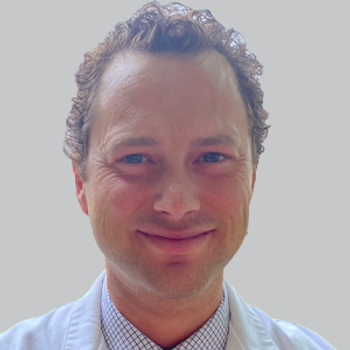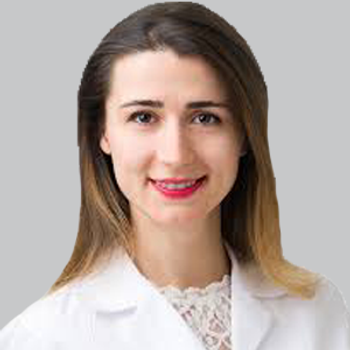
Insights on Psychedelic Use in Migraine and Cluster Headache From Canadian Survey
At AHS 2025, Eric Baron, DO, headache specialist at Cleveland Clinic, presented findings from a cross-sectional survey that examined psychedelic use among Canadian patients with migraine and cluster headache.
At the
Psychedelics have a long history of use in various religious, cultural, and spiritual contexts, with most classic psychedelics exerting their effects on serotonin 2A (5-HT2a) receptors, primarily through receptor agonism. Promising early research for medical conditions and psychiatric disorders with LSD and psilocybin – including headaches and migraines – was abruptly halted upon their classification as illegal substances in 1968 and 1970, respectively. In more recent times there has been a re-emergence and interest in psychedelics for not only mental health disorders such as depression, anxiety, post-traumatic stress disorder (PTSD), obsessive-compulsive disorder (OCD), palliative care, and substance use disorders, but also for migraine and cluster headaches. Analyzing patterns of psychedelic use for headache treatment could provide additional supporting evidence and directions for future research.
In January 2022, SABI Mind launched the Canadian Psychedelics Survey (CPS) which included 1205 variables to better understand potential associations between patient characteristics, past and current psychedelic use, and self-reported health and other outcomes. The CPS was a multidisciplinary cross-sectional survey with collaborations of multiple academic institutions. Canadian adults older than 18 years of age completed the survey online, and the study gathered comprehensive data on the use of 12 psychedelics; 2C-B, ayahuasca, N, N-Dimethyltryptamine (DMT) or 5-methoxy-N,N-dimethyltryptamine (5-MeO-DMT), iboga or ibogaine, ketamine, LSD, 3,4-Methylenedioxymethamphetamine (MDMA or MDA), mescaline, nitrous oxide, psilocybin, and salvia divinorum.
A subset of patients with headache using psychedelics for headache treatment were identified by self-reported headache diagnoses, including migraine and cluster headache. To further identify migraine patients, the survey included the ID Migraine questionnaire, a validated screen used to predict high probability of migraine. Additional variables assessed in headache patients included psychedelics used, most effective psychedelic, abortive, preventative, or dual use, recreational dosing, microdosing, or dual dosing, and percentage of headache relief.
The final study size included 2393 participants consisting of 1347 women (56.3%) and 920 men (38.4%). There were 64 patients who reported using psychedelics as headache therapy consisting of 40 women (62.5%), 18 men (28.1%). Reported headache disorders self-treated with psychedelics included 50 migraine (78.1%), 8 cluster (12.5%), and 6 with no diagnosis (9.4%) .
The most effective psychedelic reported was psilocybin in 23 of patients with migraine (46%) and 5 of patients with cluster (62.5%), followed by LSD in 6 of migraine (12%) and 1 in cluster (12.5%). The majority in 23 of migraine (46%) and 5 of cluster (62.5%) reported predominantly preventive use with psychedelics, followed by combined abortive and preventive use in 20 of migraine (40%) and 3 of cluster (37.5%) .
Any microdosing was reported in 36 of migraine (72%), and 4 of patients with cluster (50%). Any recreational dosing was reported in 29 of migraine (58%), and 6 of patients with cluster. Furthermore, 75% headache relief was reported most often in both migraine and cluster patients, with a range of 0-100% relief reported.
The presented research suggests that psychedelics, particularly psilocybin and LSD, hold promise for migraine and cluster headache management. The reported 75% relief rate among users is a compelling statistic that could drive further clinical research. The goal of the CPS was to amplify the voice, experience, and expertise of the psychedelic community in the academic understanding of psychedelics and in associated public policy development. The survey findings in a subset of patients with migraine and cluster headache showed that psilocybin followed by LSD are the most used psychedelics in these patients. The majority use them preventively with 75% relief overall most often reported. These observations could serve to improve the understanding of the therapeutic potential of psychedelics and add support in removing ongoing obstacles to research and patient access.
These results are currently being followed up with a new larger data collection from the 2025 Global Psychedelic Survey (GPS). This survey was significantly more expansive, with data collected on psychedelic use across 109 nations in 18 different languages, with similar aims as the CPS study. This new data currently being analyzed include a much larger population studied, as well as many more subjects using psychedelics for headache treatment. So, we’re excited to see if the trends noted in the CPS continue on a larger population scale.
REFERENCES
1. Baron EP, Lucas P, Lake S. Psychedelic Use in Migraine and Cluster Headache Patients Within a Subset of the Cross-Sectional Canadian Psychedelic Survey. Presented at: 2025 AHS Annual Meeting; June 19-22, 2025; Minneapolis, MN. P-159.
Newsletter
Keep your finger on the pulse of neurology—subscribe to NeurologyLive for expert interviews, new data, and breakthrough treatment updates.



































